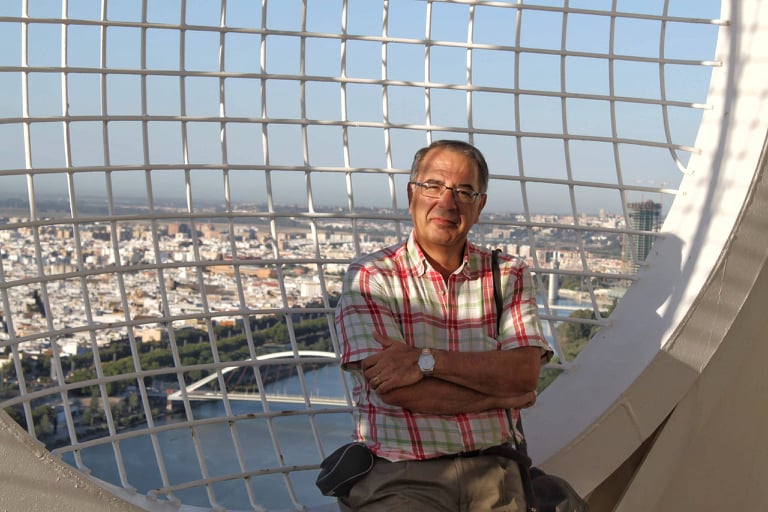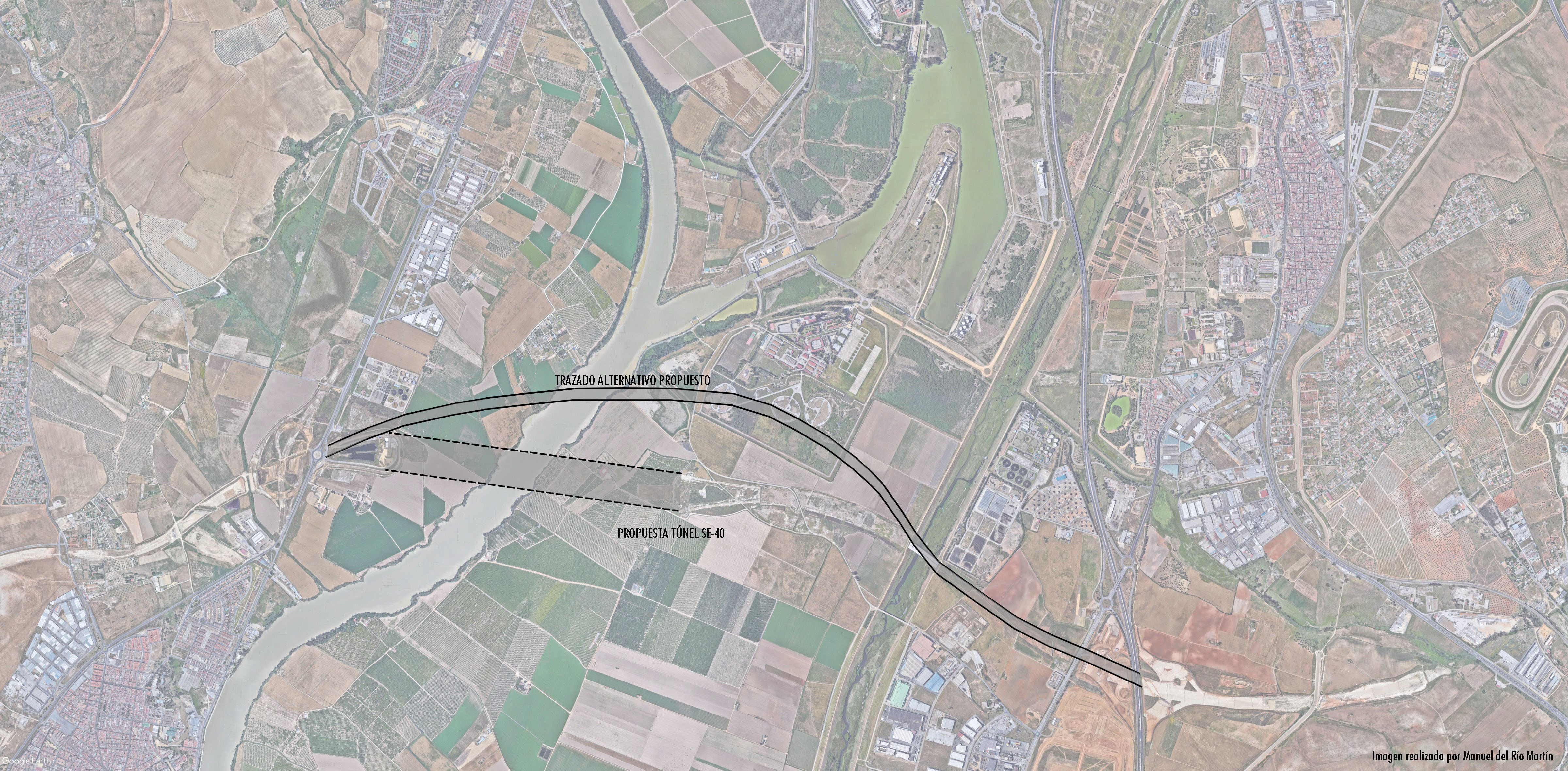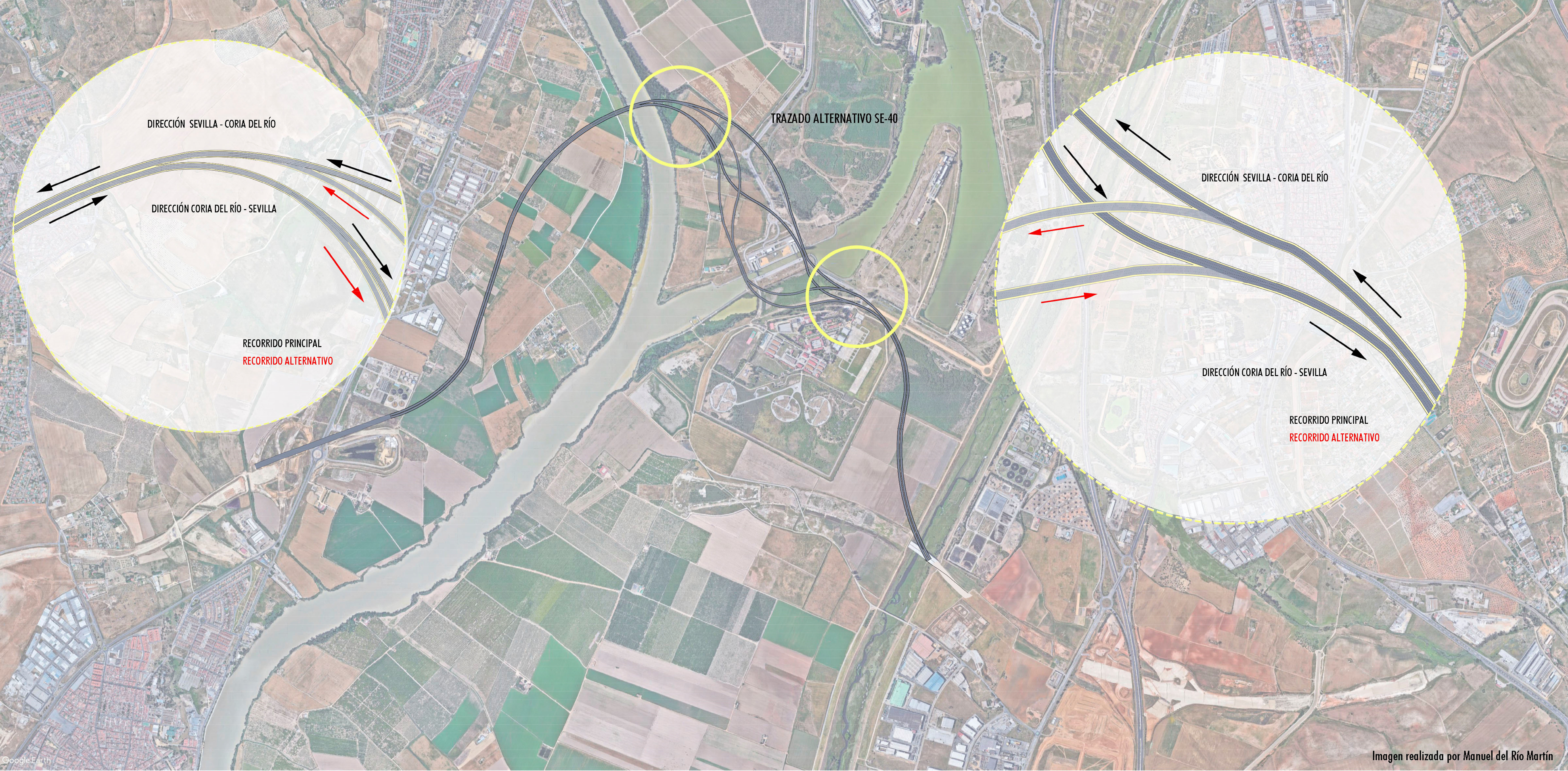The closure of the SE40 in its most conflictive section, the Guadalquivir pass
In sevilla, investment effort has slowed for almost 30 años, from the Expo 92, large investments are reduced to a metro line and several sections of the SE40.
The SE30, born in a rush, originated not very functional solutions: sections with two lanes in each direction, entrances and exits on the left, short braids, etc. This makes it essential to finish the work of the SE40 that has pending to execute, among others, the section of the Guadalquivir crossing, work that was awarded in the 2009. 11 years later it is paralyzed and with budgets that have been enormously increased.
"In the press it appears that the forecast of the costs of the SE40 in this section is around one billion euros or higher", Ángel Luis Ochoa tells us, Civil engineer, Channels and Ports, born in Madrid and more than 40 years living in Andalusia. His professional career includes railway works, water treatment plants, highways and the emblematic Puente del Alamillo. Behind this, was Technical Director at FCC Andalucía, and now that he is retired, he goes around the things that happen in the city of Seville.
Like the passage of the Guadalquivir awarded to a solution through four tunnels, remains stagnant; A solution is being proposed by means of a new cable-stayed bridge similar to the Centennial Bridge, but "there are other solutions; in general, it is always faster and cheaper to make a bridge on the shortest site and with a slope as close to the ground as possible, This situation occurs by modifying the plan of the route provided for in the awarded solution and crossing the dock at the narrowest point, which is obviously in the vicinity of the new lock and do it at ground level. It is clear that a mobile bridge would not have the necessary functionality, but if we equip the infrastructure with two mobile bridges, one at each end of the lock, each with six lanes and a lane change system, functionality is permanently guaranteed, the bridges would move at the same rate as the lock gates and the traffic would always be continuous ", proposes Ángel Luis Ochoa.
To contribute to the analysis, the three solutions are compared in various aspects with the estimated budgets that approximately appear in the press..
1. Solution 4 tunnels:
- Needs: New environmental processing is needed, the current one is expired and was made solely for 2 tunnels.
- Assessment: It is a valid and feasible solution, although complicated due to the existing grounds, but in no case can it be said that it is not feasible.
- Costs and maintenance: The construction cost is very high, it is said to be about 1.000 millions of euros. Regarding maintenance: it would be very expensive.
- Deadlines: Financial annuities, due to its high cost and the construction of the four tunnels and their interconnections, extending the term in more than a decade.
2. Cable-stayed bridge solution:
- Needs: Environmental processing and expropriations are needed.
- Assessment: Affects the Cupbearer Base rendering it useless. The slope to be able to pass over the boats generates problems similar to those of the current Centennial Bridge.
- Costs: The estimated cost is said to be 300 millions of euros.
- Deadlines: Interference with the El Copero military base, that would imply the transfer of the same and the construction with a high budget, would imply a term of around 10 años.
3. Solution by means of two mobile bridges adjacent to the lock:
It starts at the end of the current section next to the Coria Highway, it passes over this highway and through a viaduct it crosses the floodplain area of the Guadalquivir and with a bridge with sufficient clearance for the passage of sports boats from the port of Gelves, cross the Guadalquivir River, it splits into two carriageways according to the port traffic and the movement of the gates, alternately cross the dock by means of movable bridges of 40 metros (lock width), later the roads join and connect with the section already open at the height of the polygon La Isla.
- Needs: Environmental processing and expropriations are needed.
- Assessment: The plan layout increases the length over the tunnel solution by about 600 metros, but the slope is close to the current terrain.
- Costs: Estimated cost 110 millions of euros.
- Deadlines: Simpler technical solution. The deadline for the environmental process is estimated, project and expropriations of 18 months and as many of construction, being the total term of three years.
"The cost of this solution should allow other profitable investments to be made, without Seville feeling that it ends up being harmed and belittled ", engineer Ángel Luis Ochoa tells us.
In summary: “From this analysis it is concluded that the three solutions are feasible but the exorbitant cost of the solution through tunnels both for construction and maintenance makes it unfeasible.; more economical than the previous one is the solution by means of a cable-stayed bridge, but this solution has against physical problems (affects the military base of Copero), which will make the solution more expensive and extend its term; Faced with these solutions, a proposal is presented that can be executed in a shorter time and clearly more economical., which would allow joining the sections of the SE40 that are already in service, giving continuity to an infrastructure that is underused ", The interviewee tells us and concludes that "the only possible solution to cross the Guadalquivir in the navigable area before at least a decade is the solution by means of two mobile bridges of six lanes each at the ends of the lock". Because sometimes the simplest, fast and inexpensive, Is the best solution.
Historically, the decrease in boat traffic on the Guadalquivir River has affected Seville, "When it has had problems or has been technologically overcome, Seville has entered into decline ", adds Ángel Luis Ochoa. At Present, Seville has a new lock that allows the passage of higher tonnage ships, but in the river there are areas where it is necessary to expand the dredging. The Environmental Impact Statement (DAY) has been negative and with strong environmental opposition, because the salinity of the river would be affected, that is to say, the saline plug would get closer and closer to the city. "There are ways to make the two situations compatible: that the river can be navigated by a ship of greater tonnage and that the situation of the saline plug is controlled. In the current age it cannot be said that there is nothing that cannot be solved, and also in this case it would not be so expensive: there are solutions to make the navigation of larger vessels compatible without altering the balance and environmental state of the Guadalquivir river ", concludes the engineer.

The closure of the SE40 in its most conflictive section, the Guadalquivir pass by PHOTOCHOA is licensed under a Licencia Creative Commons Atribución-NoComercial-SinDerivar 4.0 Internacional.




